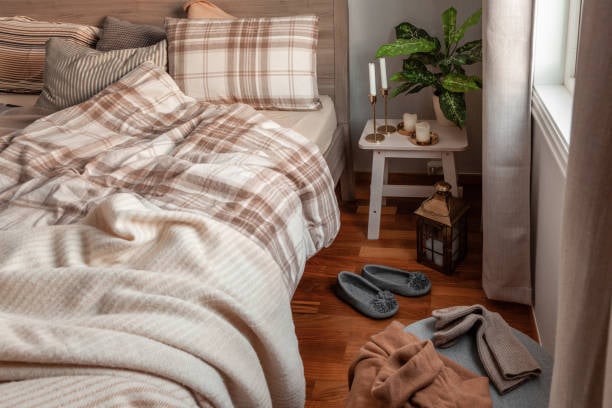Table of Contents

The Origins of Flannel: A Brief History
Flannel is a versatile fabric that has been cherished for centuries. Its origins can be traced back to the 16th century in Wales and Scotland, where it was first woven using carded wool or worsted yarn. The name "flannel" is believed to have derived from the Welsh word "gwalnen," which means woolen cloth. Initially, flannel was used for making warm clothing, but over time, its uses expanded to various industries and applications.
The Characteristics of Flannel
Flannel is known for its unique properties that make it a popular choice among both consumers and manufacturers. It is a soft and warm fabric that provides excellent insulation, making it ideal for chilly weather. Flannel is typically made from cotton, wool, or a blend of the two, and it can be woven in a plain or twill weave. The fabric is brushed on one or both sides, creating a fuzzy texture that adds to its comfort and warmth.
Flannel in Fashion and Clothing
Flannel has long been associated with cozy and comfortable clothing. It gained popularity as a staple fabric for shirts, especially in the lumberjack and outdoor workwear styles. Today, flannel shirts are a fashion statement, available in a wide range of colors, patterns, and weights. Flannel is also used to make pajamas, robes, skirts, and dresses, providing a cozy and stylish option for any wardrobe.
Flannel in Home Decor
Flannel's versatility extends beyond clothing and into the realm of home decor. It is commonly used for bedding, such as sheets, pillowcases, and duvet covers, due to its softness and warmth. Flannel also makes for comfortable upholstery fabric, adding a touch of coziness to sofas, chairs, and cushions. Its insulating properties make flannel curtains a popular choice for keeping out drafts and maintaining a comfortable temperature in the home.
Flannel in Baby Products
Flannel's softness and gentle touch make it an ideal fabric for baby products. It is commonly used for making blankets, burp cloths, bibs, and clothing for infants. The warmth and breathability of flannel help keep babies comfortable while providing a cozy and safe environment. It is important to note that flannel used for baby products should be made from high-quality, non-toxic materials to ensure the baby's well-being.
Flannel in Sports and Outdoor Activities
Flannel's durability and insulation properties make it suitable for various sports and outdoor activities. It is commonly used in outdoor apparel, such as jackets, pants, and hats, to provide warmth and protection against the elements. Flannel is particularly popular in activities like hiking, camping, and skiing, where staying comfortable and protected in cold weather is essential.
Flannel in Cleaning and Household Uses
Flannel's absorbent and soft nature make it a practical choice for cleaning and household uses. It is often used as cleaning cloths, dish towels, and dusting rags due to its ability to efficiently absorb liquids and trap dust particles. Flannel is also utilized for polishing and buffing surfaces, as its soft texture prevents scratching or damaging delicate materials.
Flannel in Arts and Crafts
Flannel's versatility makes it a popular choice for arts and crafts projects. It can be used in various creative endeavors, such as quilting, sewing, and upholstery. Flannel fabric is easy to work with, as it does not fray easily and holds its shape well. Its wide range of colors and patterns allows for endless possibilities in creating unique and personalized crafts.
Caring for Flannel
To ensure the longevity of flannel garments and products, proper care is essential. Flannel should be washed in cold or warm water with a gentle detergent to prevent shrinkage. It is best to avoid using bleach or harsh chemicals that can damage the fabric. Flannel can be machine dried on a low heat setting or air-dried to maintain its softness and shape. Ironing may be necessary, but it is important to use a low heat setting and iron on the reverse side to avoid damaging the fabric.
Conclusion
Flannel is a versatile fabric that has stood the test of time. Its softness, warmth, and durability make it a popular choice for clothing, home decor, baby products, outdoor activities, cleaning, and arts and crafts. Understanding the various uses and care instructions for flannel can help you make informed decisions when incorporating this fabric into your lifestyle. Whether you're snuggling up in a flannel shirt or decorating your home with flannel accents, this fabric is sure to add comfort and style to your everyday life.
